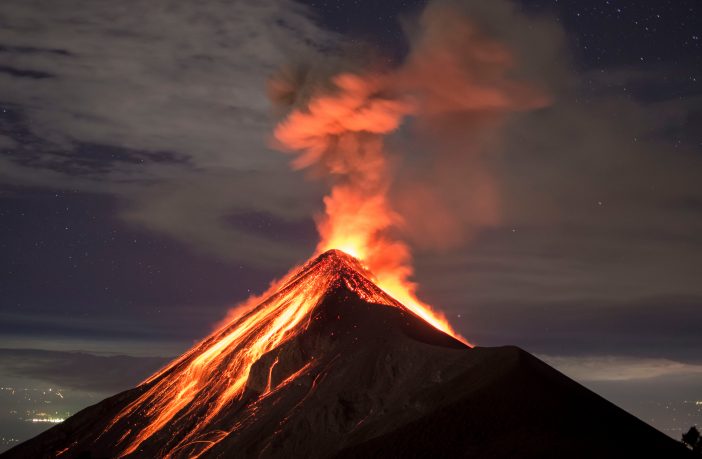Professor David Rothery, Professor of Planetary Geosciences, explains more about what is happening in Guatemala: “The cause of most deaths at the current eruption of Fuego (Guatemala) is being widely reported as a ‘river of lava‘. This is probably an inexpert description or a mistranslation. Fuego does not characteristically produce long fluid lava flows like those currently erupting from Kilauea (Hawaii). They are unlikely to reach inhabited areas, and are not the main hazard at this volcano.”
“A lava flow (molten rock) rarely travels fast enough to engulf people, and bodies are unlikely to be traceable afterwards.”
Pyroclastic flows travel faster than lava
“The videos and still images that I’ve seen suggest instead one or more pyroclastic flows. This is when a violently erupted mass of rock fragments and hot gas finds itself too dense to rise as an ash column, and instead cascades down the volcano’s slopes. Pyroclastic flows (or surges) can move at over 100 km per hour, and may be hot enough to glow like molten lava. They can travel further, as well as much faster, than lava flows. This is the phenomenon that claimed many lives during the famous AD 79 eruption of Vesuvius that destroyed Pompeii.
“Fuego has been in eruption since 2002, and was continuously active in 2017. On 17th May 2018, a 25 metre wide lahar (volcanic mudflow) came down the mountain, and there were explosions and ash plumes during 19-21st May.
“The Guatemalan volcano monitoring authority (Insivumeh) is now reporting the eruption as over, although lahars remain a hazard when rain falls on newly-deposited ash.




